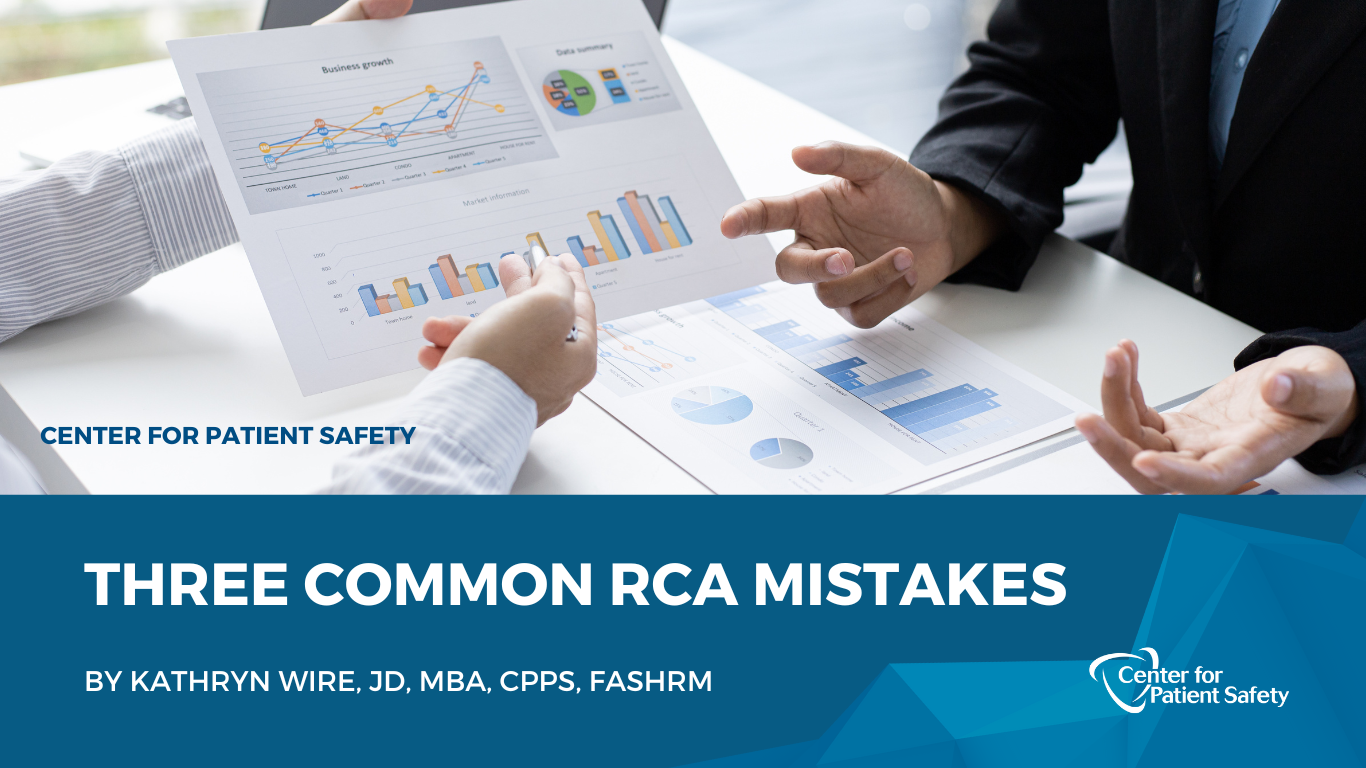When done correctly, Root Cause Analyses (RCA) play an important role in enhancing patient safety in the healthcare industry. By employing a systematic approach, healthcare professionals can gain an understanding of the factors that contribute to adverse events and implement preventative measures to mitigate future occurrences and improve patient care. Many RCAs have been submitted to the Center for Patient Safety PSO by clients, generating opportunities to protect, share and learn more about the events that are occurring. The CPS team reviews these RCAs to evaluate deeper learnings and along the way, has discovered a few areas where organizations can improve their investigative processes.
A number of the investigations reported to CPS failed to involve relevant stakeholders. Successful RCAs require input from various individuals, including frontline staff, doctors, nurses, and quality improvement specialists. Each stakeholder brings a unique perspective and valuable insights that can contribute to a better understanding of the processes and systems involved in the event to be investigated. When important parties are excluded from the process, healthcare organizations miss out on valuable information and may overlook key factors that played a role in the event. Including a multidisciplinary team allows for different perspectives, resulting in a more comprehensive understanding of the adverse event.
Many of the investigations reported only a timeline of events (often straight from the medical record), without prioritizing and connecting findings. The investigation should reflect active fact collection from multiple sources such as medical records, incident reports, video footage, staff interviews, patient and family interviews, document reviews, and any other sources of relevant information. Close examination of the situations or conditions that contributed to the event can support the identification of underlying system and process issues.
Finally, and most importantly, corrective actions should be developed that address the root causes that led to the event. The actions reported to CPS are often limited to re-education, policy review, or the addition of manual steps in the process, which are not powerful solutions. The strongest and most successful responses will include, for example, the elimination of waste in work, the adoption of engineering controls, standardization of equipment, and process simplification. Changes should be prioritized based on the potential impact on patient safety and the feasibility of implementation.
Beyond the initial investigation process, any changes implemented as a result of an RCA require monitoring. Implementation timelines and process and outcome measurements can monitor the success of the correction action plans and, ultimately, the effectiveness of the RCA.
We encourage you to explore your own RCA process and look for opportunities to challenge your organization to improve the process.

.png)